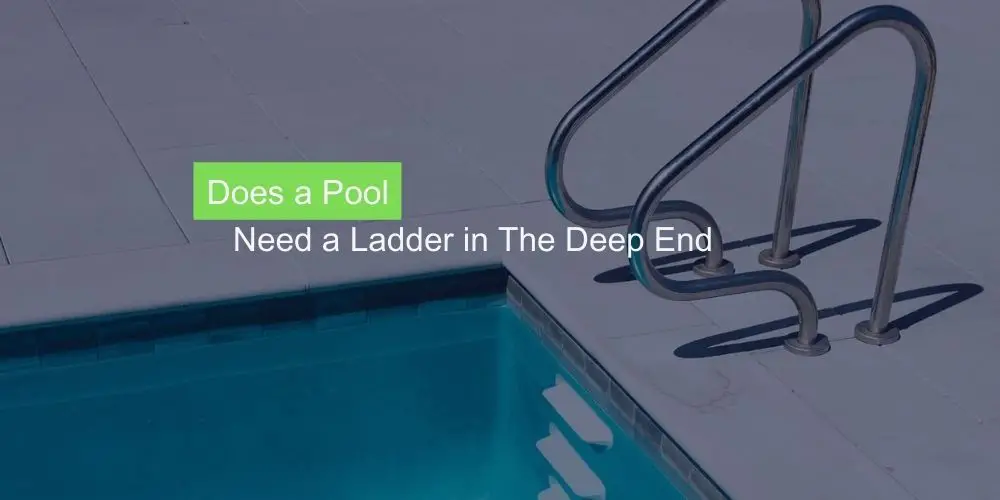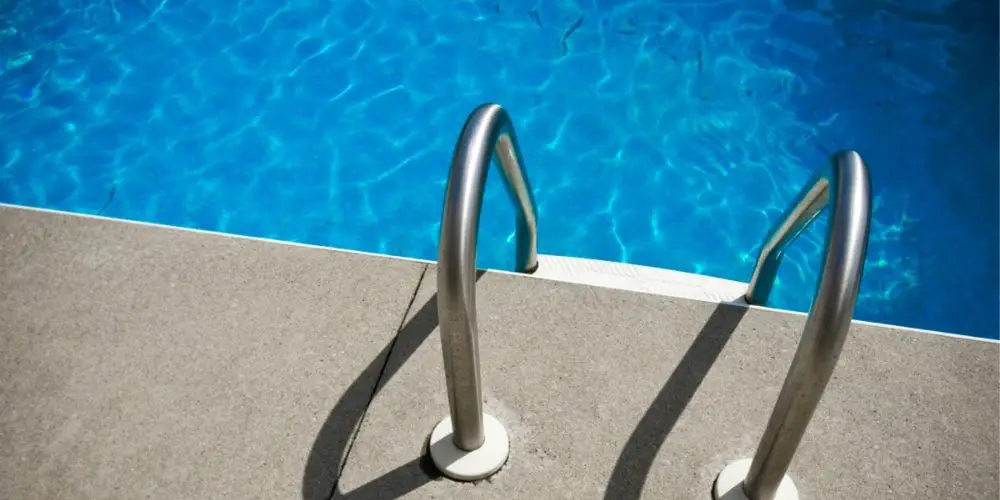
Pool safety is of utmost importance when it comes to enjoying a day of swimming. As we dive into the topic, one aspect that often goes unnoticed is the absence of ladders in the deep end. Ladders play a critical role in providing swimmers with a safe and convenient means of exiting the pool. Whether we realize it or not, the presence or absence of a ladder can greatly impact our ability to enjoy our time in the water without worry. In this blog post, we will explore the importance of pool ladders, discuss safety concerns in the deep end, and shed light on the significance of accessibility and inclusion for all swimmers. Let’s dive in and uncover whether a pool truly needs a ladder in the deep end.
Does a Pool Need a Ladder in The Deep End

A pool ladder serves the primary function of providing a safe and convenient way to enter and exit the pool. While ladders are typically found in the shallow end, there is a common assumption that they are not necessary in the deep end due to our ability to swim. However, it’s important to recognize that not all swimmers have the same capabilities, and unexpected situations can hinder a swimmer’s ability to reach the pool’s edge without assistance. In the next section, we will explore the safety concerns that arise from the absence of ladders in the deep end and the importance of prioritizing inclusivity and accessibility in pool design.
Pool Safety and Accessibility: The Deep End and Ladders
The absence of a ladder in the deep end poses risks for swimmers, especially in situations where fatigue or cramps may hinder their ability to reach the pool’s edge safely.
Additionally, various user demographics, such as children, elderly individuals, and those with limited mobility, face difficulties without a ladder. Prioritizing inclusivity and considering diverse needs is crucial for ensuring everyone can enjoy the pool safely.
Pool accessibility involves accommodating different user needs. Having a ladder in the deep end increases accessibility and provides equal opportunities for swimmers of all ages and physical abilities.
It enhances the overall swimming experience, eliminating frustration and empowering individuals who may have felt excluded. By recognizing the importance of inclusivity, we can create a welcoming and safe environment for everyone.
Alternatives to Traditional Ladders:
Innovative alternatives to traditional ladders can provide safe and convenient access to the deep end of a pool while enhancing safety and aesthetics.
Options like pool stairs, built-in steps, and sloped entries offer ease of access and a more secure pathway for swimmers. Concerns about the impact on the pool’s aesthetics can be addressed by integrating these alternatives seamlessly into the overall pool design.
By striking a balance between functionality and beauty, pool owners can ensure a visually stunning pool that prioritizes safety and accessibility.
FAQs: Does a Pool Need a Ladder in the Deep End?
Where do you put the ladder in the deep end of a pool?
Unless the pool is very narrow, you should have a ladder on each side of the deep end. A ladder should have at least two steps in the water and one above. For children, consider a ladder in the shallow end as well.
Where should the ladder be placed in an inground pool?
Recessed steps or ladders should be provided at the deep portion of the swimming pool, and if the pool is over thirty feet (30′) wide, such steps or ladders should be installed on each side.
What can I use instead of a pool ladder?
An alternative to pool ladders are footholds built right into the pool wall. These footholds resemble smoother and safer rock climbing crevices. While they may be more expensive than ladders, they eliminate the bulkier profile associated with traditional ladder designs. Additionally, colorful pottery and easy-care plants can enhance the pool area’s aesthetics.
How do you climb out of the deep end of a pool?
If you find yourself in the shallow area, you can use the bottom of the pool to push yourself out. However, when in the deep end, it is important to have a ladder or alternative means of exiting the pool. This ensures your safety and provides a convenient method for climbing out of the water.
Final Thoughts
All in all, a ladder or alternative access point is crucial for safety and inclusivity in the deep end of a pool. While swimming skills are important, considering diverse needs is vital. Innovative alternatives like pool stairs, built-in steps, and sloped entries provide easy and secure access. Balancing aesthetics and functionality is possible through thoughtful design integration. Prioritizing safety doesn’t mean compromising beauty. Let’s create pools that cater to all swimmers, ensuring enjoyment and peace of mind. By embracing inclusivity and accessibility, we dive into a future of safer and more inviting pools.

Hi, This is Josh. I am a former competitive swimmer and current fitness enthusiast.
I created this site to share my love of swimming with the world!

